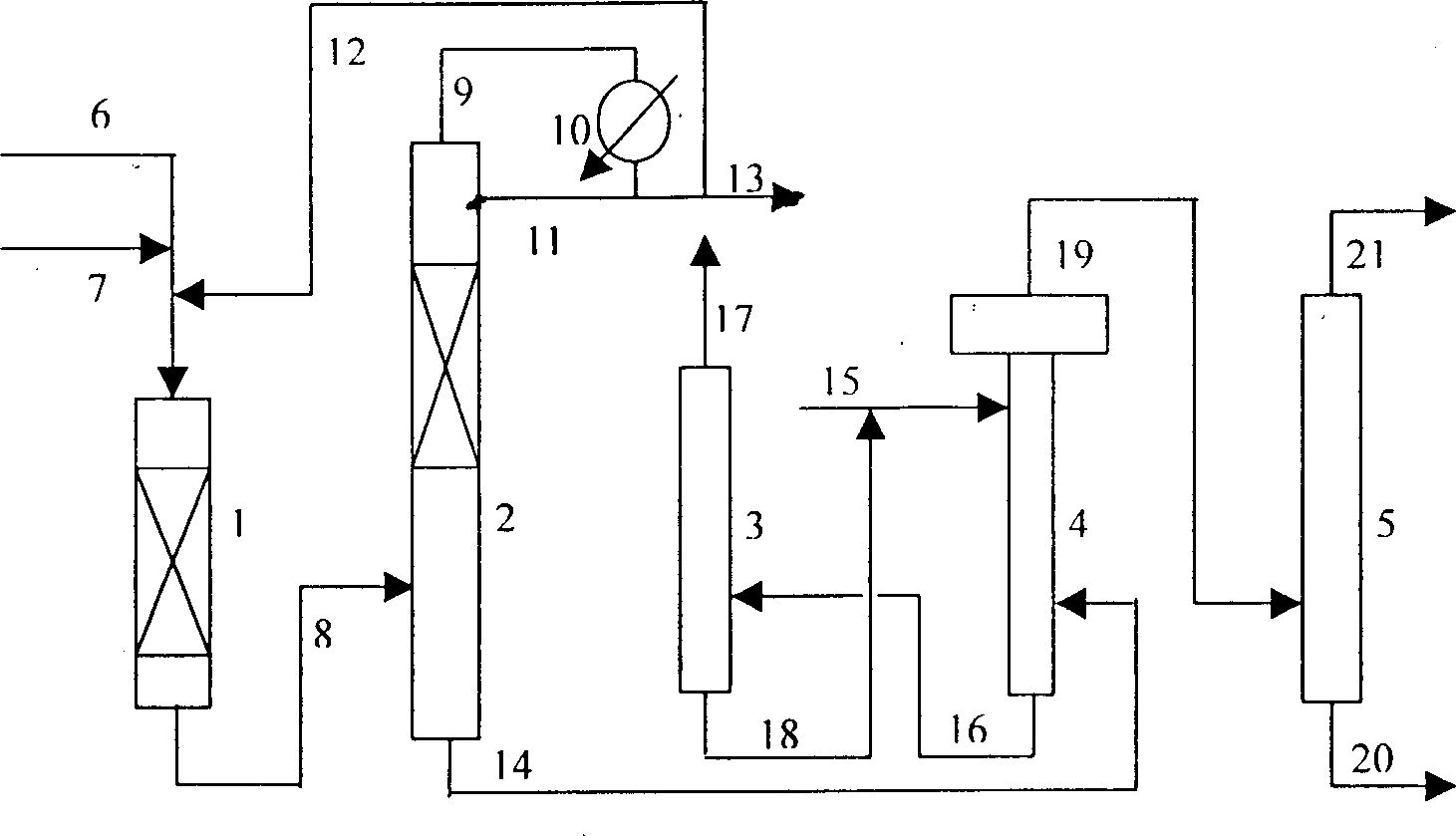Method of producing diisobutylene using mixed C4
A technology of diisobutylene and isobutylene, applied in the production field of diisobutylene, can solve the problems of high trimer content and low utilization efficiency, etc.
- Summary
- Abstract
- Description
- Claims
- Application Information
AI Technical Summary
Problems solved by technology
Method used
Image
Examples
Embodiment 1
[0034] use as figure 1 catalytic distillation process.
[0035] mix C 4 Contains 48.5% isobutene and 26.3% n-butene
[0036] Feed amount: 300g / h
[0037] Fixed bed polymerization reactor catalyst loading: 500ml
[0038] Catalytic distillation tower catalyst loading: 200ml
[0039] A polymerization inhibitor (tert-butanol) is added to the raw material, and the molar ratio of the inhibitor to isobutene in the fresh feed is 0.015:1.
[0040] Fixed bed polymerization reaction temperature 50.0°C, reaction pressure 0.65Mpa
[0041] The inlet temperature of the catalytic distillation tower bed layer is 62°C, and the reaction pressure is 0.65Mpa
[0042] The temperature at the top of the separation tower is 104.5°C, which is normal pressure separation
[0043] 185 g / h of polymerized product was obtained from the water washing tower, wherein the C8 content was 93.7%, and the diisobutylene content was 76.9%. The purity of diisobutene obtained from the separation tower is 98.3%. ...
Embodiment 2
[0045] use as figure 2 Tandem fixed bed process
[0046] mix C 4 Contains 48.5% isobutene and 26.3% n-butene
[0047] Feed amount: 300g / h
[0048] The catalyst loading capacity of the first and second fixed bed polymerization reactors are respectively: 500ml and 300ml
[0049] Add appropriate amount of polymerization inhibitor (water) respectively in the feed of the two-stage reactor, the mol ratio of total inhibitor amount and the isobutylene in the fresh feed is 0.02: 1, the add-on amount of the first stage reaction is 70% of total amount .
[0050] The first-stage fixed-bed polymerization reaction temperature is 50.0°C, and the reaction pressure is 1.0Mpa
[0051] The second-stage fixed-bed polymerization reaction temperature is 70.0°C, and the reaction pressure is 1.0Mpa
[0052] Hydrogenation bed temperature: 160°C, hydrogenation pressure 1.0Mpa
[0053] 178g / h of the polymerized product was obtained, wherein the C8 content was 92.3%, the diisobutene content was 7...
PUM
 Login to View More
Login to View More Abstract
Description
Claims
Application Information
 Login to View More
Login to View More - R&D
- Intellectual Property
- Life Sciences
- Materials
- Tech Scout
- Unparalleled Data Quality
- Higher Quality Content
- 60% Fewer Hallucinations
Browse by: Latest US Patents, China's latest patents, Technical Efficacy Thesaurus, Application Domain, Technology Topic, Popular Technical Reports.
© 2025 PatSnap. All rights reserved.Legal|Privacy policy|Modern Slavery Act Transparency Statement|Sitemap|About US| Contact US: help@patsnap.com


